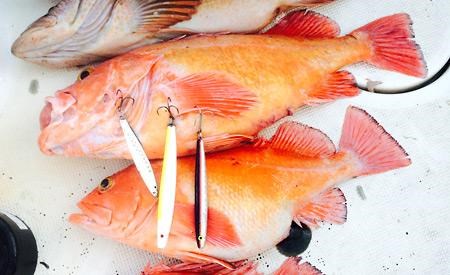Imagine a fish swimming around so old that it witnessed Captain George Vancouver’s arrival in Desolation Sound; that’s the scale of time marine biologists are dealing with when it comes to some species of rockfish.
Marine biologists say rougheye rockfish have an average life expectancy of over 200 years, while the better known quillback and yelloweye rockfish, also known as red snapper, boast a life expectancy of up to 100 years—a longer life expectancy than the average Canadian woman at 81 years.
Add to that their non-migratory nature, combined with the fact that many species of rockfish, which include ling cod and rock cod, don’t reproduce until they are about 20 years old, plus the decade stretches of time between boom years for the species—what results is a species vulnerable to overfishing and being wiped out.
That is what almost happened during the 20th century to these fish in the Strait of Georgia.
By the 1980s it had become increasingly obvious to the federal government that rockfish were in trouble, so strict management rules and seasonal closures were put into place by the Department of Fisheries and Oceans (DFO).
A series of 164 Rockfish Conservation Areas (RCA) were established in the strait between 2004 and 2007 as part of the government’s Rockfish Conservation Strategy.
In DFO areas 15 and 16, RCAs were established around Dinner Rock, the Copeland Islands, most of Desolation Sound, Teakerne Arm and Pendrell Sound. In Area 16 RCAs can be found near Davie Bay, the Sabine Channel as well as Hardy and Nelson islands, Hotham Sound and northern reaches of Jervis Inlet. Area 14 includes an RCA surrounding Mitlenatch Island.
While recreational and commercial fishers are not permitted within these areas, some biologists have concerns about the effect of prawn traps on strait glass sponge populations, key habitat for the fish.
Biologists are still waiting to see if this RCA nursery approach will help the beleaguered fish make a recovery.
But there is a glimmer of hope for the coast.
Dr. Jeff Marliave, Vancouver Aquarium vice-president of marine science and self-described “born-again rockfish obsessor,” said he spent the first decade of this millennium studying the fish in and around Vancouver.
He has seen a slight recovery in stocks. What worries him are fishers who are not following fisheries’ guidelines.
“It is with great dismay that I have seen the federal guidebook to rockfish conservation areas become the guidebook for poachers,” said Marliave.
But the marine scientist said that while there are not DFO officers patrolling the conservation areas, he is heartened by a cultural shift he has started to see in the RCA in West Vancouver’s Whytecliff Park. Signs have been posted on the rock walls in the areas where poaching has been prevalent, he said. “The dog walkers won’t allow anyone to come into the park with a fishing rod and tackle box anymore,” he said. “They get yelled at.”
Since the RCAs were established in Howe Sound, an area so overfished that the existence of rockfish was deemed a statistical anomaly, Marliave and his team of researchers have watched some of the areas rebound.
Marliave added that there are still uncharted deep water crevices, “Jurassic Parks,” out there still and charted areas within RCAs, impossible for line and hook fishers to reach which are providing safe havens for rockfish to repopulate. In addition, he has noted that it seems the spacing between the RCAs is correct because what he has seen is as the population of one area increases, the usually non-migratory fish are moving over to less populated RCAs which provide more abundant food sources.
Sam Sansalone, owner of Powell River Outdoors, echoes Marliave’s experience for the waters around the Upper Sunshine Coast. “Rock cod are definitely on the increase here,” said Sansalone. “But there’s not a lot of people fish for them locally and the limits on them are quite low, which makes sense.”
He would like to see more information available for people fishing near these areas so more people are aware of the RCAs and can also do more self-policing.
Sport fishers are currently permitted to keep one rock and one ling cod per day during the open season which runs from May to November.
For more information about RCAs on the upper coast, visit DFO’s website.



